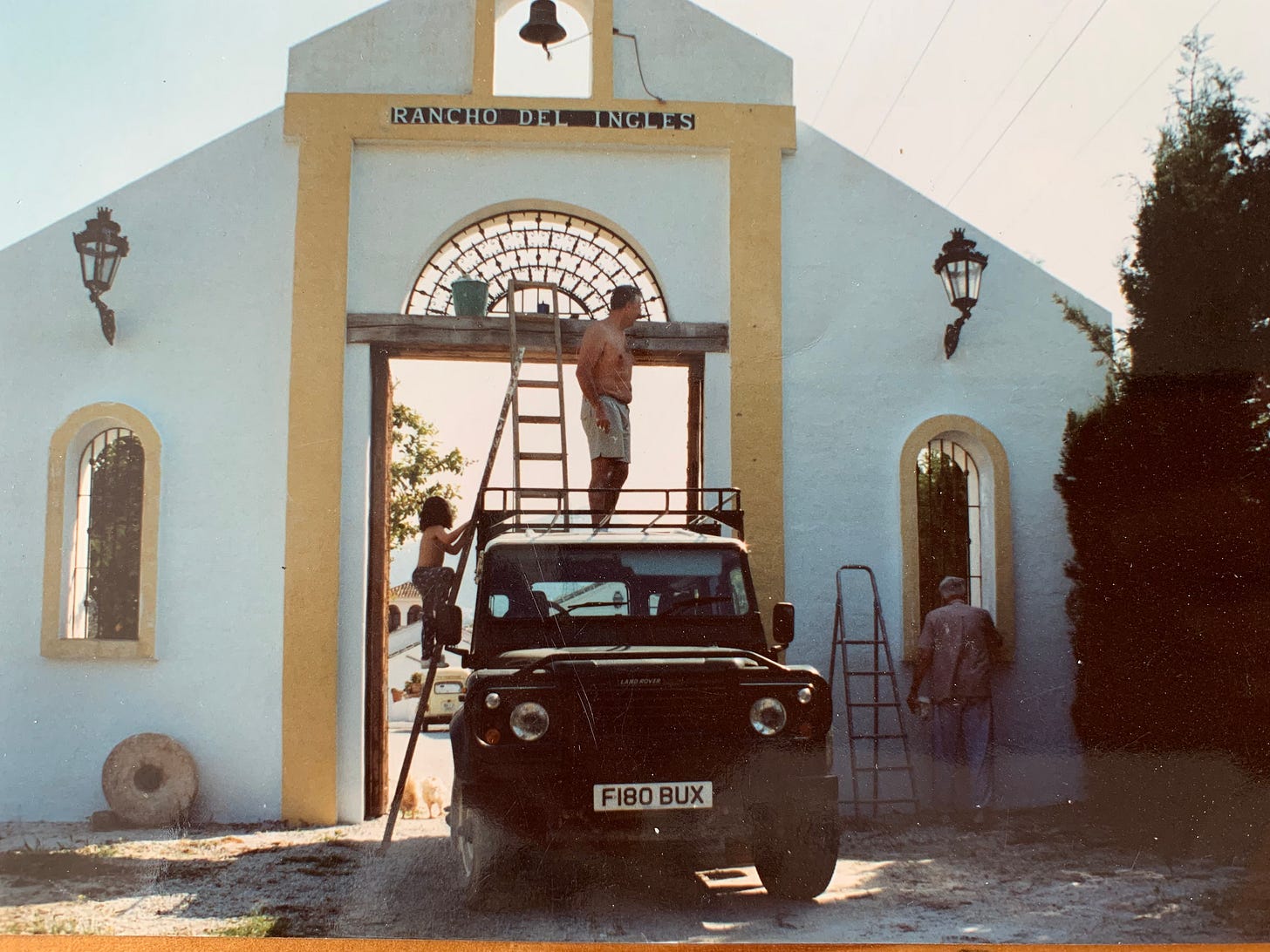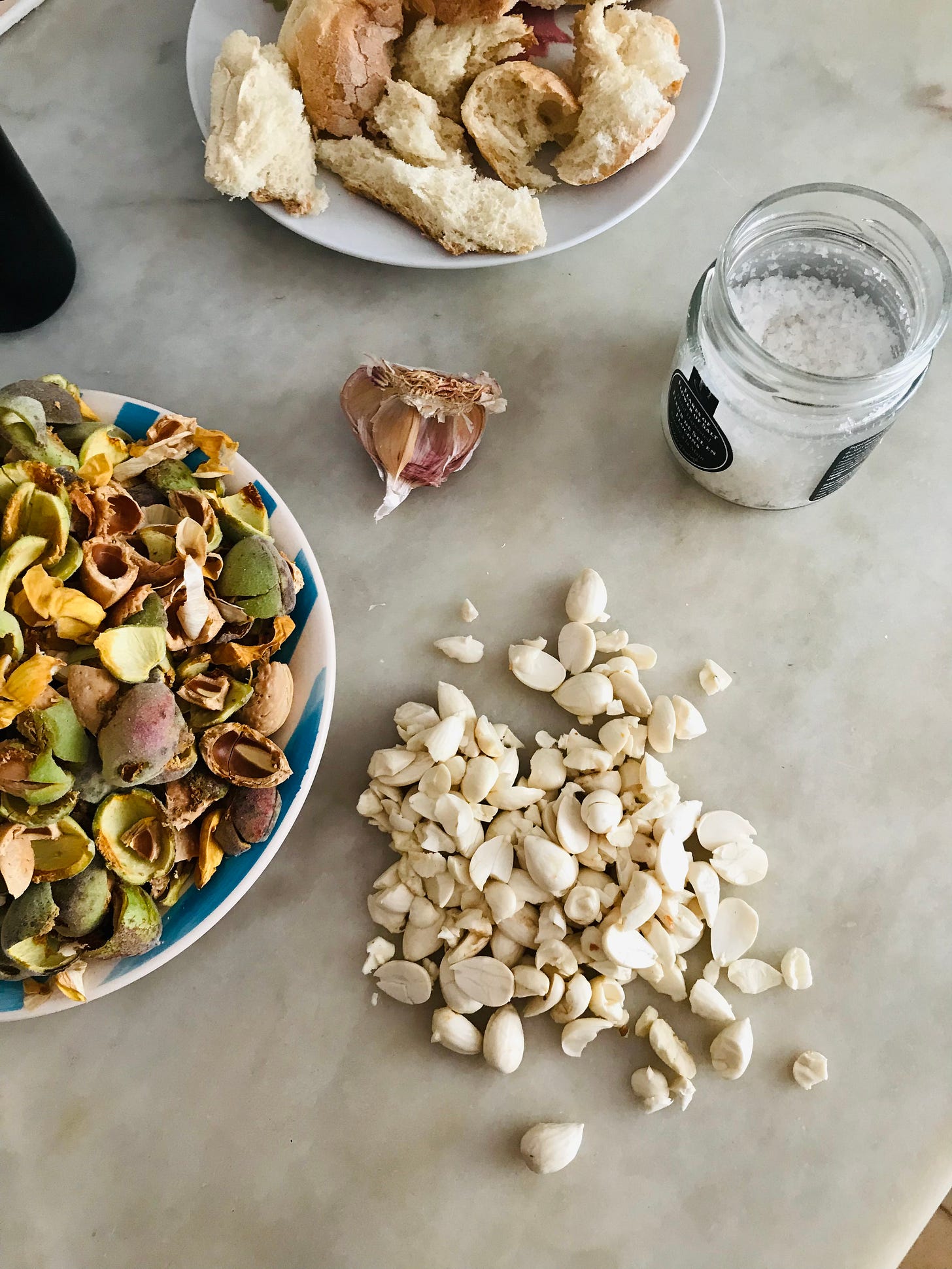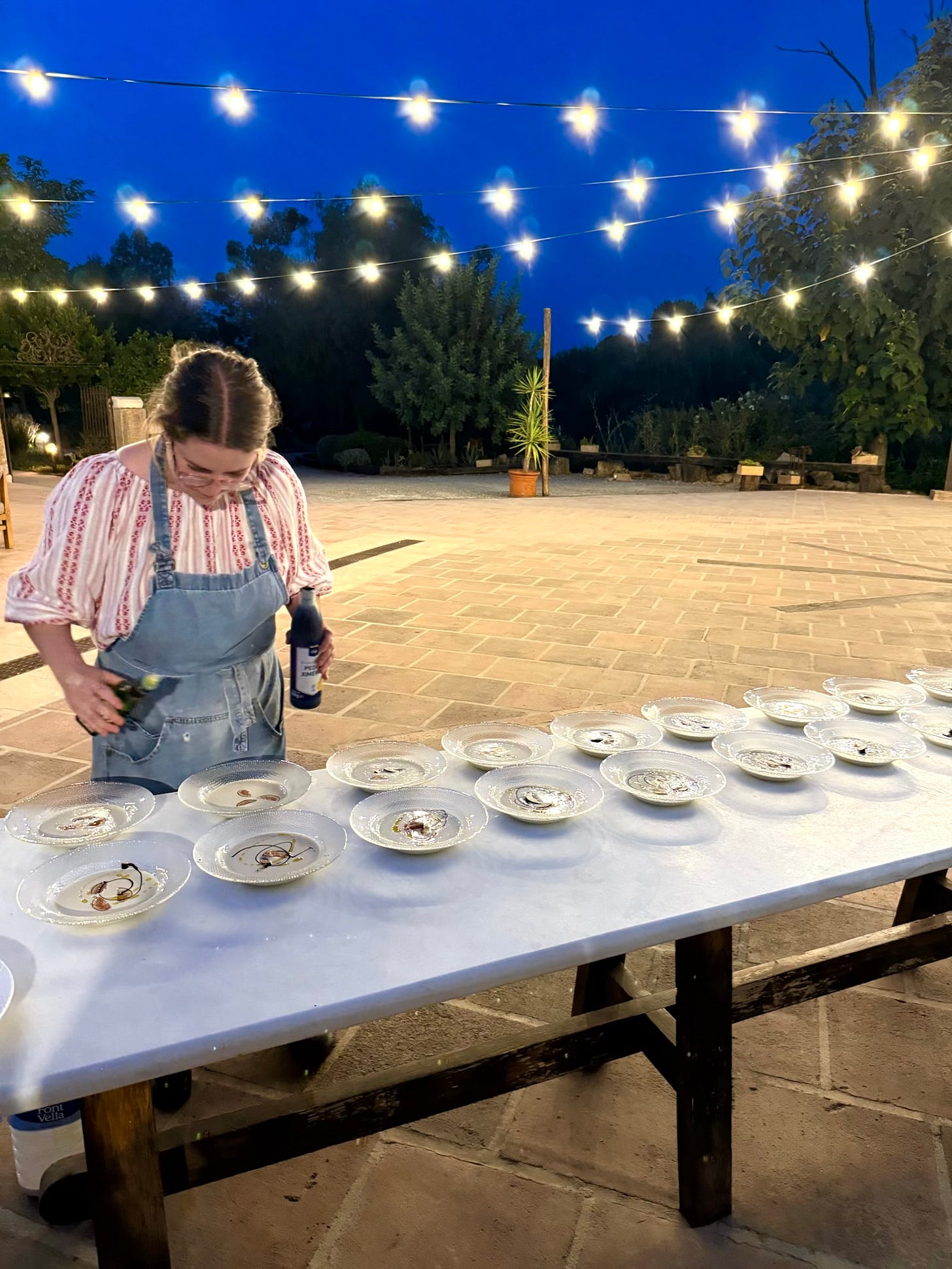RECIPE: Ajoblanco
A cold soup with a warm reception
At Sobremesa, the retreat we held at Rancho last month (I will write it up this week!), one of our lovely guests asked if I could make Ajoblanco - a classic almond, garlic, and bread soup from the region we were in. Naturally, I was happy to. We kicked off our last meal of the week with it, (it got a round of applause!), and as I sat down to type up the recipe, all these memories came back of being a kid, in Spain. Harvesting almonds with Dad, eating Ajoblanco for the first time, making it with our neighbour Rosa and cutting down the grapes to place on top.

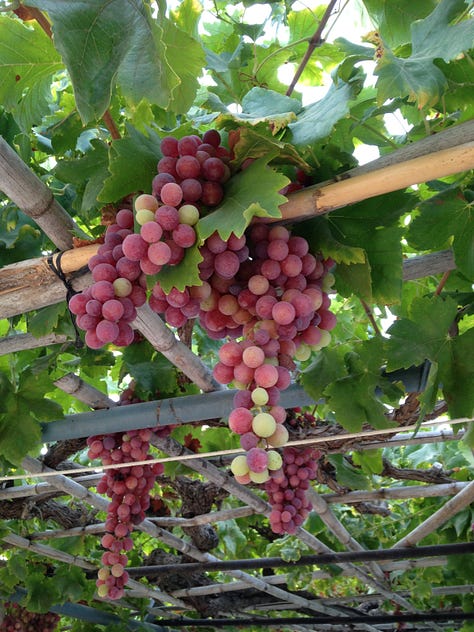
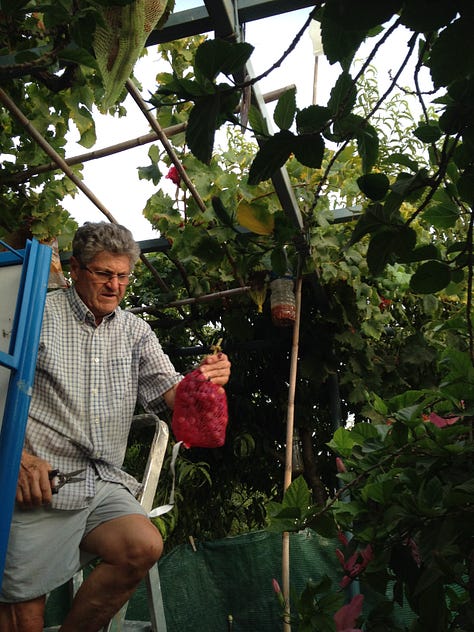
If you wanted to spend quality time with Dad growing up, you had to be prepared to get stuck in to whatever project he had on the go. He wasn’t into playing kid’s games, and he didn’t know how to sit still. We’d always be looking for him as he moved from one job to the next and whether that was oiling wood, painting walls or pressure washing tiles, if you helped, you’d get to hang out with him. Manual labour was his love language and a hug with him smelled of sweat and paint thinner.
One such family bonding task was picking almonds. Some 35 years ago, around the corner from Rancho and when land was cheap, he acquired a field of almond trees. He would lay out a sheet of tarpaulin underneath a tree and drive his Land Rover right up close. Us kids would take it in turns to stand on the roof rack with him and use all our might to shake the branches. Whoever was underneath gathering these almonds would be getting pelted in the head on their way down. It was so much fun!
I loved the whole ritual of harvesting the almonds, peeling off the furry hull, carefully cracking the shell between two rocks to remove the nut. My Nanny “Miki” (short for Miyuki, same name as my Mum) would blanch the almonds, and with raisiny fingertips we would slip the nuts from the slippery skins and then dry them out before eating just like that, or after roasting. Almonds are the key ingredient in this soup although not mentioned in its name, because I guess there would have been a time they weren’t there at all.
It’s often described as “white gazpacho,” but to me it feels more ancient, more elemental. Long before tomatoes arrived from the Americas, Andalusians were blending almonds, bread, garlic, and olive oil into this pale, velvety soup. Its origins lie in Moorish Spain, when almonds were first introduced and flourished under the irrigation systems the Arabs brought with them. We owe so much to the Arabs! The flavours are simple, yet they carry a history that stretches across the Mediterranean. A mingling of cultures, resourcefulness, and the land itself. Eating it today feels like a celebration of how the humblest ingredients can be transformed into something timeless and an example of how a recipe this good doesn’t need messing with. Although I do think it’s fun to play around with the toppings and I’ve spooned over everything from tomatoes and smoked sardines to cherries. I’ll share the base recipe and you can play around.
I was just flicking through an old instagram highlight of making Ajoblanco with my niece and nephew 7 years ago (a treasured time before they were glued to screens) Picking almonds from a tree some 20 years later and teaching them how to make this beautiful recipe, it just made me so happy.
RECIPE
Serves 4, as a starter.
You’ll need a high powered blender.
I first ate this soup as a young child at a family friend Carmen’s apartment on the coast. We’d just got home from Aqua Park and she poured it out of a container she’d kept in the fridge. There were ice cubes and grapes bobbing around in my bowl… of cold soup. I wasn’t really sure what to make of it. But it has been a favourite ever since.
I really strongly feel that this soup needs resting time, blend it and keep it in the fridge for at least four hours or overnight. It may thicken a little overnight and you can just water it down a little, but the garlic mellows and the flavours improve and it’s just all together better. Pics here from the retreat, with figs, reduced vinegar and olive oil.
Ingredients
90g day old/ stale white farmhouse bread (crusts removed)


